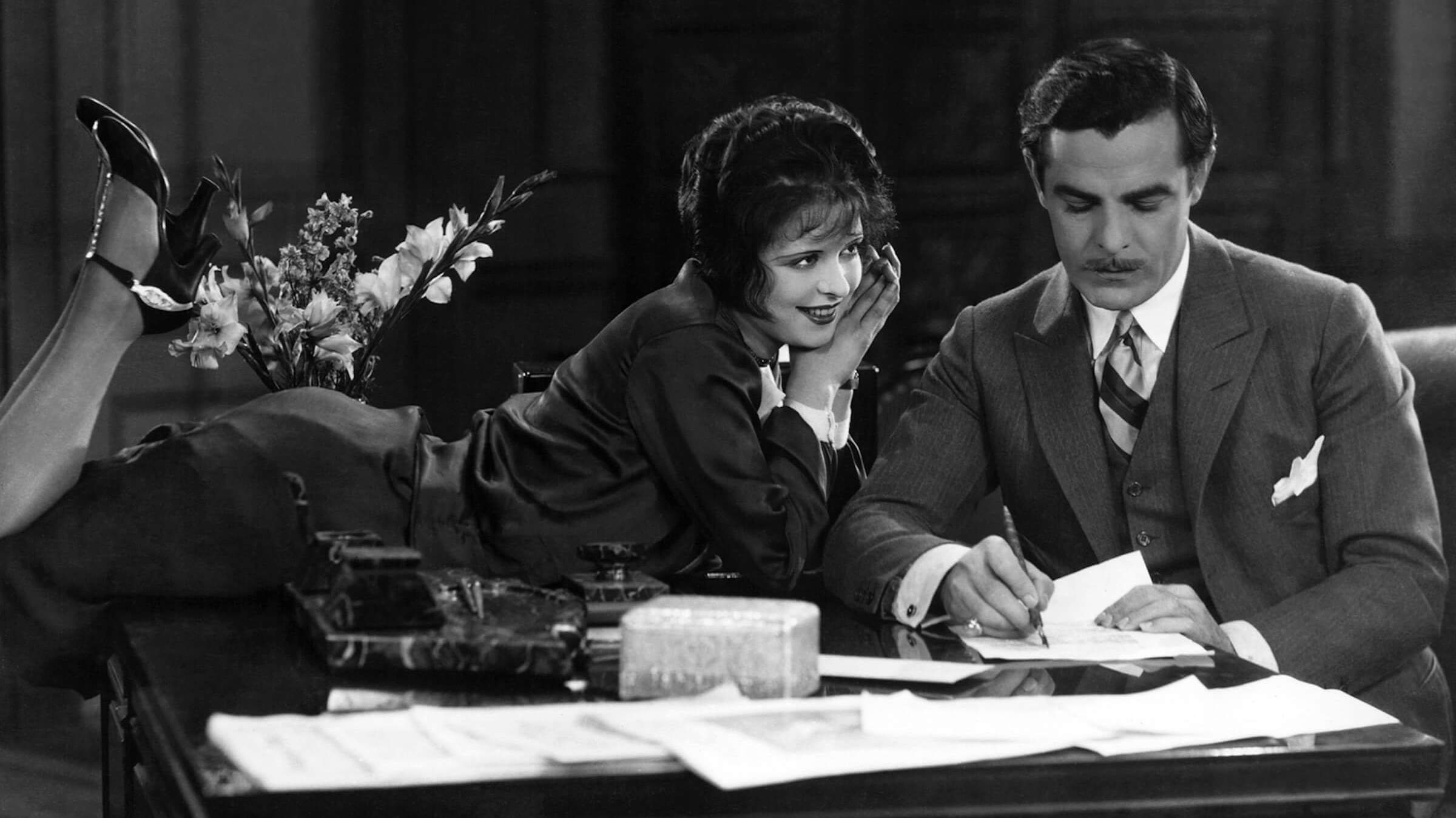You can read the program essay for our 2005 screening of It here
Looking at Clara Bow and the era that made her famous, it seems inevitable that she led the life she did. The daughter of an estranged, unloving father and an abusive mother, she escaped into the dream life of a Hollywood film star at the age of 17. With the naiveté born of a seventh grade education and a worldview confined to the Brooklyn tenements where she grew up, Clara Bow went on to become the unhappy pawn of a studio system, willing to sacrifice the mental health of its star properties for the sake of a quick profit. It was her 37th film in five years, and her first for Paramount Studios. She made 20 more films in the next five years before becoming a Hollywood dropout at the tender age of 28.
Clara Bow’s popularity was defined by a vivacious, confident screen presence, which made her a symbol of feminine sex appeal in the 1920s. With the arrival of talking pictures and the Great Depression, her unique energy was stifled by the demands of the stationary microphone, which she grew to loathe, and the death of the flapper as a symbol of youthful freedom.
Her acting style was completely natural and depended on a highly unpredictable degree of improvisation, which frustrated many directors. She could rarely be relied on to hit a mark, and cinematographers gave up on creating special lighting for her once they realized she wasn’t likely to sit still for it. Clarence Badger, who was initially frustrated by her inability to take direction, watched in amazement during the filming of one particular scene as Clara ran the gamut of emotions—from love to lust to playfulness. He immediately stopped filming and demanded to know what she thought she was doing. He recalled her explanation years later: “That first expression was for the love-sick dames in the audience, and that second expression, that passionate stuff, was for the boys and their paps, and that third expression—well Mr. Badger, just about the time all the old women in the audience had become shocked and scandalized by that passionate part, they’d suddenly see the third expression, become absorbed in it, and change their minds about me having naughty ideas and go home thinking how pure and innocent I was; and having got me mixed up with my character I’m playing, they’d come again when my next picture came out.”
Clara Bow’s dream of becoming a movie star was brought to life when she won a beauty contest; the prize was a small part in Beyond the Rainbow (1922). Her performance was consigned to the cutting room floor, but she was fortunate enough to get another part in Down to the Sea in Ships (1922). A studio talent scout saw her performance and recommended her to B.P. Schulberg, head of Preferred Pictures. She was in the middle of making her third film, Grit (1923), written by a young student named F. Scott Fitzgerald, when Schulberg sent for her. She left immediately for California, and upon arrival she was rushed directly to the offices of B.P. Schulberg, without being given the opportunity to prepare, in the only dress she owned. One look at this disheveled street urchin with a Brooklyn accent made Schulberg wonder what he had been talked into. He scheduled a screen test right there and then, and he was soon won over. Her naturalness and ability to convey emotion was undeniable. He signed her to a contract that day.
It proved to be the apex of her career. She made her last film in 1933, then retired to a Nevada ranch with husband Rex Bell, who had been her leading man in True to the Navy (1930). His decision to enter politics took him away from home for long periods of time, isolating Clara to raise their two sons by herself. She suffered bouts of insomnia and depression, which led to a suicide attempt in 1943. She spent the remainder of her years drifting in and out of sanitariums until resettling in Los Angeles. The girl from Brooklyn returned to the town that had defined who she was—The IT Girl—and then forgotten her with the onset of the Depression and the forced morality of Louis B. Mayer and the Hayes code. She died in 1965, on the eve of a new era of sexual freedom.
Presented at SFSFF 2001 with live music by Chris Elliott on the Mighty Wurlitzer

